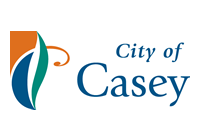Junction Village
Qualifications
12.3% of females in Junction Village had a Vocational qualification in 2016, lower than Interface Councils. This represents - of 0 females since 2011.
Educational Qualifications relate to education outside of primary and secondary school and are one of the most important indicators of socio-economic status. With other data sources, such as Employment Status, Income and Occupation, Junction Village's Educational Qualifications help to evaluate the economic opportunities and socio-economic status of the area and identify skill gaps in the labour market.
Derived from the Census question:
'What is the level of the highest qualification the person has completed?'
Persons aged 15 years and over
Interface Councils include the municipalities of: Cardinia (S), Casey (C), Hume (C), Melton (S), Mornington Peninsula (S), Nillumbik (S), Whittlesea (C), Wyndham (C) and Yarra Ranges (S).
Source: Australian Bureau of Statistics, Census of Population and Housing (opens a new window) 2011 and 2016. Compiled and presented by .id (opens a new window)(informed decisions).
(Usual residence data)

Compiled and presented in profile.id by .id (informed decisions).

Compiled and presented in profile.id by .id (informed decisions).
Dominant groups
Analysis of the qualifications of the female population in Junction Village in 2016 compared to Interface Councils shows that there was a lower proportion of females holding formal qualifications (Bachelor or higher degree; Advanced Diploma or Diploma; or Vocational qualifications), and a higher proportion of females with no formal qualifications.
Overall, 24.9% of the female population aged 15 and over held educational qualifications, and 47.5% had no qualifications, compared with 45.8% and 45.0% respectively for Interface Councils.
The major differences between qualifications held by the female population of Junction Village and Interface Councils were:
- A larger percentage of females with No qualifications (47.5% compared to 45.0%)
- A smaller percentage of females with Bachelor or Higher degrees (5.6% compared to 20.0%)
- A smaller percentage of females with Advanced Diploma or Diplomas (7.0% compared to 11.3%)
- A smaller percentage of females with Vocational qualifications (12.3% compared to 14.6%)
Emerging groups
The largest change in the qualifications of the female population in Junction Village between 2011 and 2016 was:
- No qualifications (-58 females)
